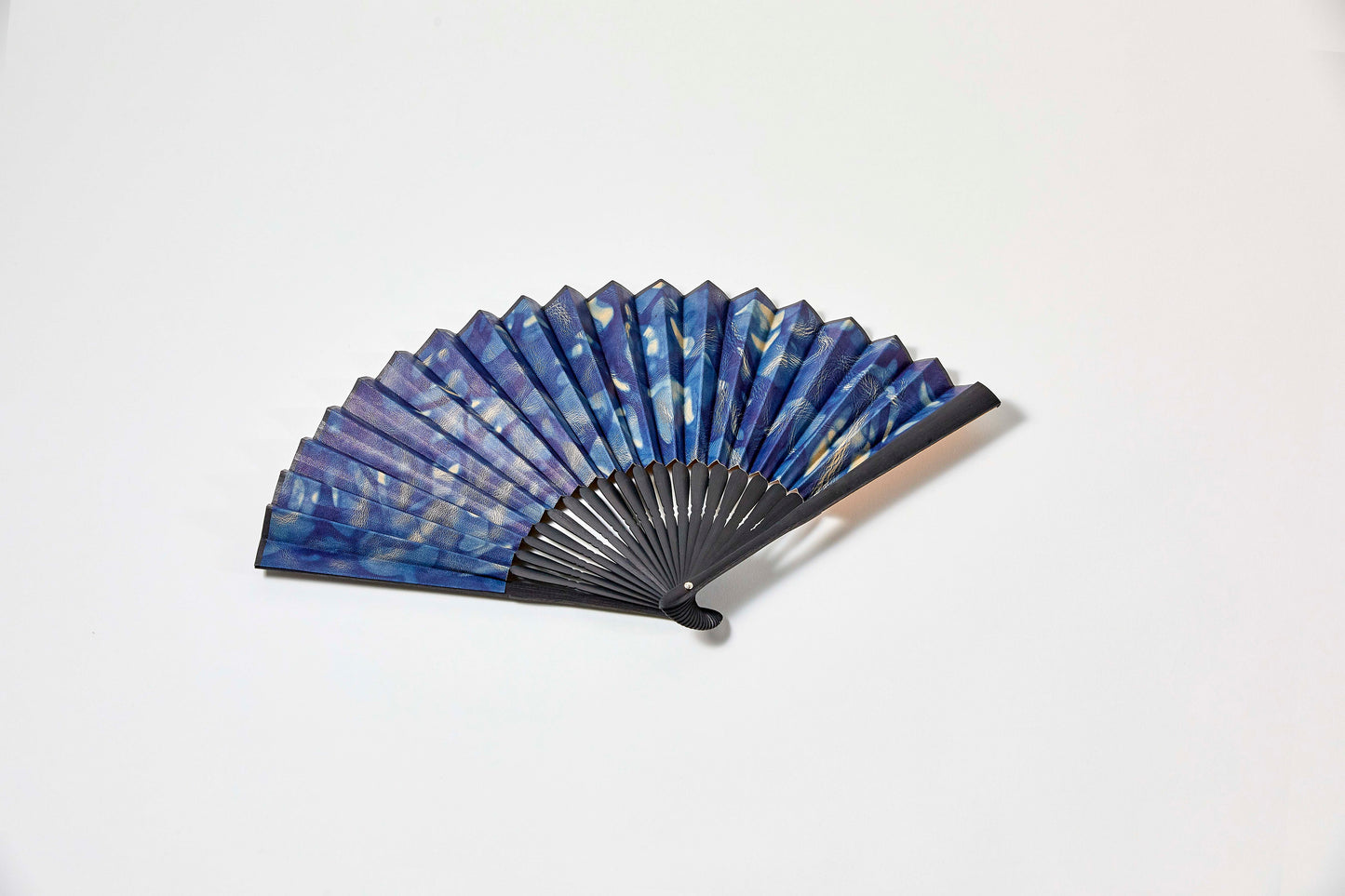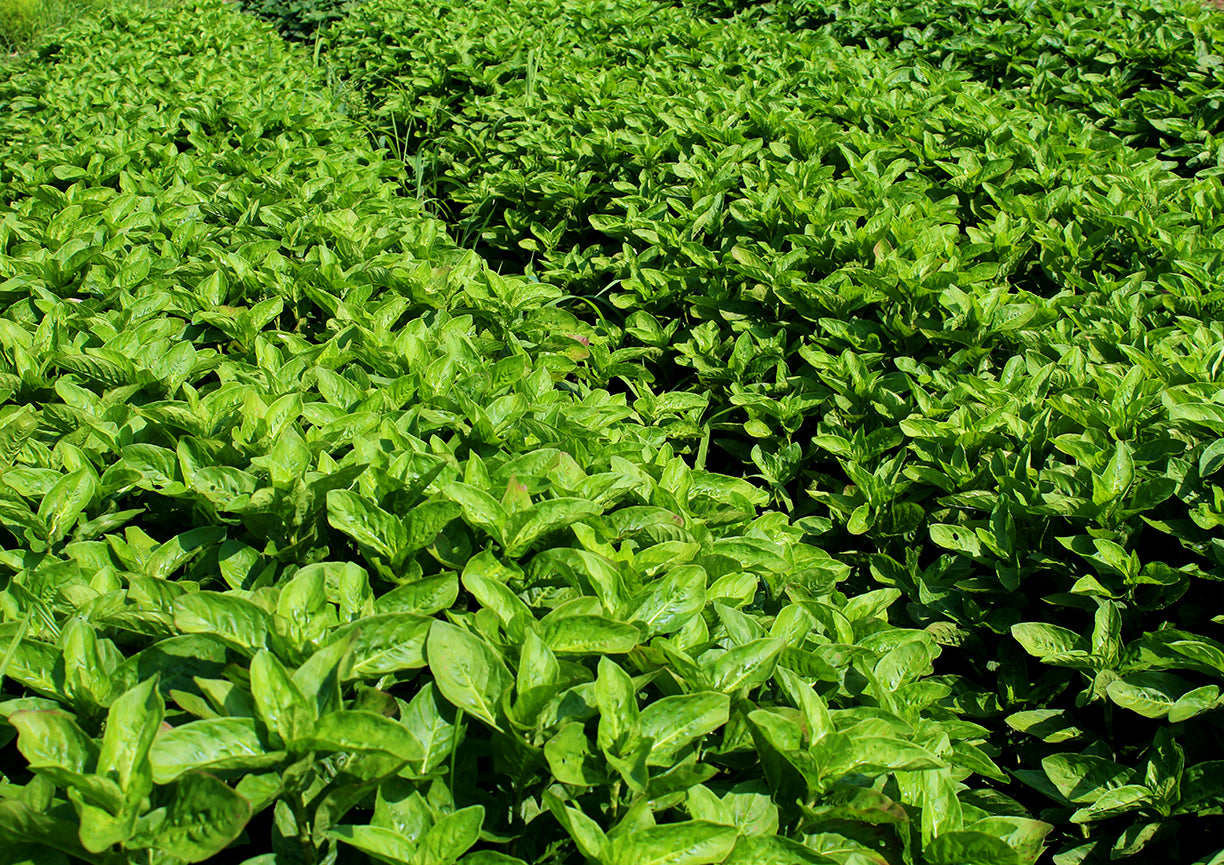扇子 / botanical leather® 藍染 / 斑絞り / 牛革
扇子 / botanical leather® 藍染 / 斑絞り / 牛革
徳島の藍を発酵させた染液で染め上げた牛革を職人の手で薄く漉き、京都で扇子に仕立てました。タンニン鞣しの革を使用しておりますので、革の経年変化も楽しめる逸品になっております。
高級感のある桐箱に入れてお届けいたします。
藍染は古来、中国から伝わり、江戸時代には庶民の色として親しまれました。殺菌作用が強いことから、染めた衣服で皮膚病や毒虫を防ぐなどの効果もあります。材料である藍草は小上粉、百貫、千本などの様々な品種があり、現在では徳島や宮崎、北海道などで栽培されていますが、年々生産量が減少しています。「te saho」では江戸時代より特上と評された、徳島産の小上粉の藍草を発酵させた蒅を主に使い、建染めで染重ねております。
【 斑絞り 】
革を水に浸し柔らかくした後に手で絞り上げなどする伝統技法。繰り返し染色することで複雑な柄になり、厚みが薄いほど柄も細かく繊細なタッチの模様に仕上がります。







The "mystery" of indigo-dyed leather
Awa indigo dyeing
This leather is dyed using traditional Japanese indigo dyeing techniques. The leather is dyed with Sukumo indigo dye, which is made by fermenting the indigo plant. Sukumo indigo dye contains the subtle colors of the plant, which is made from indigo leaves. It is characterized by its depth of color, and the subtle differences that occur depending on the season and dye conditions, allowing you to enjoy its individuality. Indigo dyeing is made using fermentation techniques, and natural products are used to activate the fermentation bacteria during dyeing. Therefore, it has a small impact on the environment and is a sustainable dyeing method that receives the blessings of nature. Each piece of leather is carefully hand-dyed by a craftsman using natural indigo dye, resulting in a finish that gives you a sense of the delicate art woven by nature. Among them, "shibori indigo dyeing" is dyed by craftsmen who tie each piece with thread, and depending on how it is folded, various patterns can be created, and you will never come across the same one again, so to speak, it creates a once-in-a-lifetime pattern. Enjoy the traditional Japanese indigo dyeing technique and the one-of-a-kind patterns.

Awa indigo dyeing in Tokushima, Japan's No. 1 indigo producing region
Tokushima Prefecture is the number one producer of indigo in Japan, and its history is long, said to date back to the Heian period. The leaves of the indigo plant (Tadeai) grown and harvested in Tokushima Prefecture are dried and fermented to create a natural indigo dye called "sukumo," which is called "Awa indigo." In the Edo period, as cotton became more widespread, indigo-dyed products became popular among the common people, and indigo production flourished, continuing to the present day.

A once-in-a-lifetime pattern dyed one by one by hand
Awa indigo dyed leather is a leather that can truly express JAPAN BLUE, with a deep blue color that is achieved by using indigo material for dyeing.
Indigo seeds are sown in March. After that, the indigo leaves harvested in the summer are dried in the sun and left in a "bed" from autumn to mid-February.
The process of adding water and mixing it, known as "kirikaeshi," is repeated.
After that, the sukumo (dye) that has been fermented by the indigo master is placed in an indigo vat and fermented with wheat, wood ash, etc., before finally moving on to the dyeing process.
Each piece is dyed by a skilled craftsman, who continues the dyeing process over and over again until he is satisfied with the color.
In addition, the sophisticated tie-dyeing technique creates beautiful, hand-made patterns that bring out a unique individuality.
Featured products
-
Cow leather / Hand-painted art dye / Red
AST-05Regular price ¥19,457 JPYRegular priceUnit price per -
Cowhide / Kip leather / botanical leather® Sakura dye / Somei Yoshino
BSY-01Regular price ¥42,662 JPYRegular priceUnit price per -
Cow leather / Hand-painted art dye / Green
AST-07Regular price ¥25,168 JPYRegular priceUnit price per -
Cow leather / Hand-painted art dye / Blue
AST-06Regular price ¥27,394 JPYRegular priceUnit price per
- Choosing a selection results in a full page refresh.
- Opens in a new window.










